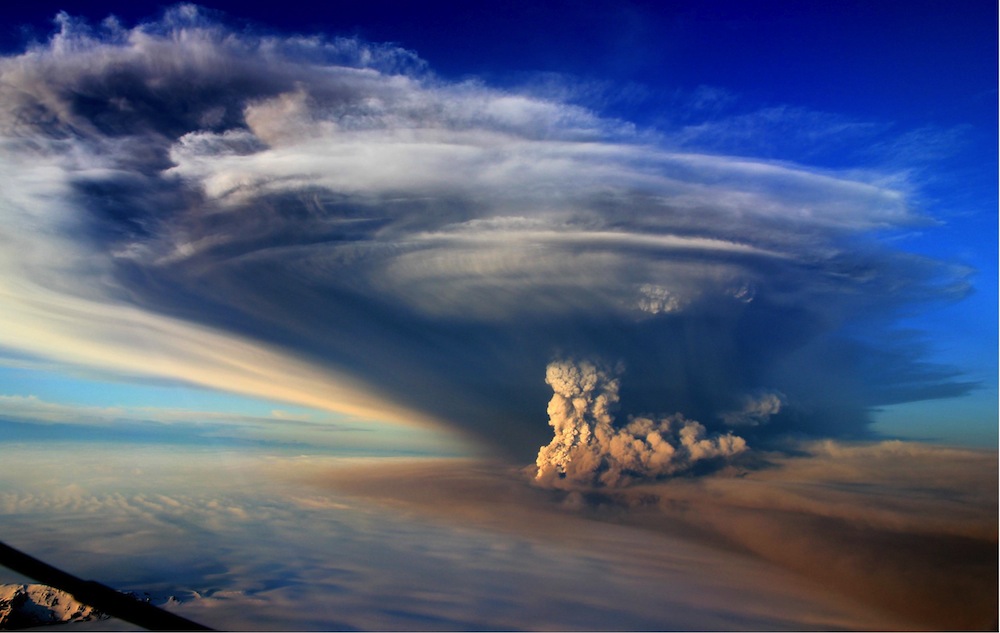
Volcano Ground-Warping Could Predict Ash Plume Height

The way a volcano warps the ground might predict how high an eruption's ash plume will get, which in turn might help scientists gauge the impact the explosion could have before it happens, researchers say in a new study.
Scientists analyzed Grímsvötn for the study,, a volcano near the middle of the Vatnajökull ice cap on the volcanically active island of Iceland.
"Grímsvötn volcano is Iceland's most frequently erupting volcano," said study lead author Sigrún Hreinsdóttir, a geophysicist at the University of Iceland in Reykjavik.
Grímsvötn's 2011 eruption was its greatest since 1873, erupting about 9.5 billion cubic feet (270 million cubic meters) of material. The resulting ash plume reached 15.5 miles (25 kilometers) high, closing air traffic over northern Europe and causing the cancellation of about 900 passenger flights.
The researchers monitored how the volcano deformed the ground using high-precision GPS sensors and tilt-meters, devices that measure changes in their own position and tilt over time. They compared this data with the height of the eruption plume over time, using radar data and photographs taken during the eruption.
"I am interested in better understanding volcanic activity using GPS and one key aspect is to improve eruption forecasting," Hreinsdóttir said. "We started monitoring the volcano with GPS measurements in 1992."
The investigators discovered the height of the ash plume varied in tandem with the GPS readings. These findings suggest both were controlled by changes in pressure within the volcano's magma chamber, which sits at a depth of about 1 mile (1.7 kilometers) .
Sign up for the Live Science daily newsletter now
Get the world’s most fascinating discoveries delivered straight to your inbox.
Intriguingly, the ground began to warp an hour or so before the plume erupted. This suggests that GPS data could be used to predict the eruption and evolution of an ash cloud before it happens, providing timely warnings, the researchers say.
"Could we perhaps in the future be able to give out short-term forecasts of an imminent eruption and be able to say something about how big the eruption was going to be?" Hreinsdóttir told LiveScience's OurAmazingPlanet. "GPS is becoming more and more common in a volcanic setting for monitoring unrest, possibly giving us information on the plume height."
The next step is "to investigate available deformation signals from significant eruptions at other volcanoes," Hreinsdóttir added.
Hreinsdóttir and her colleagues detailed their findings online today (Jan. 12) in the journal Nature Geoscience.
Follow OurAmazingPlanet @OAPlanet, Facebook and Google+. Original article at LiveScience's OurAmazingPlanet.










